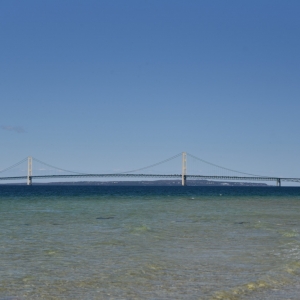Iberia Parish Sewerage District No. 1 serves several thousand residents on the coast of Louisiana. Brad Cradeur is the executive director of the sewer system, which, like many around the country, is in need of attention. Sewer pipes in the district need new liners to prevent groundwater from seeping in. Lift stations and treatment plant equipment are also due for an upgrade.
Cradeur, like many water managers, was facing so much repair work that he wasn’t sure how – or when – he would have enough money for it all.The Louisiana district takes in enough revenue to operate the system but not enough for major reinvestments. By his calculations, Cradeur figured it would take a decade or two to save the several million dollars it would take for the capital improvements.
Fortunately, the district now has another option. To complete the sewer work, the district will receive nearly 6 million dollars in federal grants channeled through state and parish governments. That, said Cradeur, will make a huge difference. He told Circle of Blue “It really allows us to do monumental overhauling that we’d have to budget for years to do.”
The American Rescue Plan Act is the relief bill that President Joe Biden signed into law on March 11 last year. It set aside $350 billion to help states, tribes, territories, and local governments respond to the financial challenges wrought by the pandemic. One of four broad spending categories authorized by the act are water infrastructure improvements like those needed by Iberia Parish.
Since the act became law nearly a year ago, government agencies have been determining how to divide their share of the pie. Many are putting — or are planning to put — significant resources into their water systems, a cash infusion to revitalize aging pipes and treatment facilities. According to a database by the National Conference of State Legislatures, states, territories, and Washington, D.C. have already dedicated at least $10 billion in pandemic funds to water systems. That figure sets a baseline for the financial impact of the American Rescue Plan Act. It does not include spending by local governments, which are likely put a large portion of their windfall toward water infrastructure. A survey from last September found that water and sewer systems were a priority for three-quarters of the local government leaders who responded to it.
The water infrastructure investment tally does not include states who are still finalizing their spending plans. The Michigan Senate, for instance, passed a bill last December to put $970 million in state coronavirus funds toward water infrastructure. The Michigan House has yet to vote on the measure.
Last November, when President Biden signed the Infrastructure Investment and Jobs Act into law, he intended it to be one of his signature legislative victories, a “once-in-a-generation” investment in the systems that move people, water, information, and energy around the country. The infrastructure act provided $55 billion for water, sewer, and stormwater systems, plus another $8.3 billion to respond to drying conditions in the American West. The American Rescue Plan Act probably will not reach that level, even though final numbers for water infrastructure spending won’t be known for a few years. According to the act, funds must be committed to a project by December 31, 2024 and spent by December 31, 2026.
But even today, it is clear that the pandemic funds will have a long reach. For example, California used $301 million to pay off the water bills of low-income residents who fell behind during the pandemic. Other states have also set aside large amounts for water infrastructure. Montana allocated $462 million. Louisiana allocated $300 million. Kentucky and Ohio allocated $250 million. The funding is not just going to large, multimillion-dollar projects. Maine dedicated $100,000 to provide free well water testing for low-income households. Oregon put $500,000 toward building fish bypasses at dams.
In Louisiana’s Iberia Parish, American Rescue Plan Act funds are covering the entire $5.7 million sewer overhaul. Cradeur lists three main areas of work: system renewal, disaster preparation and treatment plant upgrades. For the system, the district will reline sewers in nine subdivisions where groundwater is infiltrating the pipes. It will also replace some of its 82 pump stations, which keep sewage flowing through the pipes.
As for disaster preparation, coastal Louisiana is no stranger to severe weather. In the last two years it’s been hit by Category 4 hurricanes Laura and Ida. Cradeur intends to add 16 backup generators that can provide emergency power when the electrical grid fails. The third priority is improving the treatment plant, which came online back in the 1970s, the same decade the Clean Water Act was signed into law.
Cradeur acknowledges that grants like those coming from the American Rescue Plan Act are important for renewing rural infrastructure and keeping services affordable. His district is taking an active approach to finding outside funds. “We’re not sedentary,” he said, “We’re not ‘woe is me.’ We go after grants.”
And that’s “What’s Up With Water,” from Circle of Blue, where water speaks. More water news and analysis await you at
circleofblue.org. This is Eileen Wray-McCann – thanks for being here.






